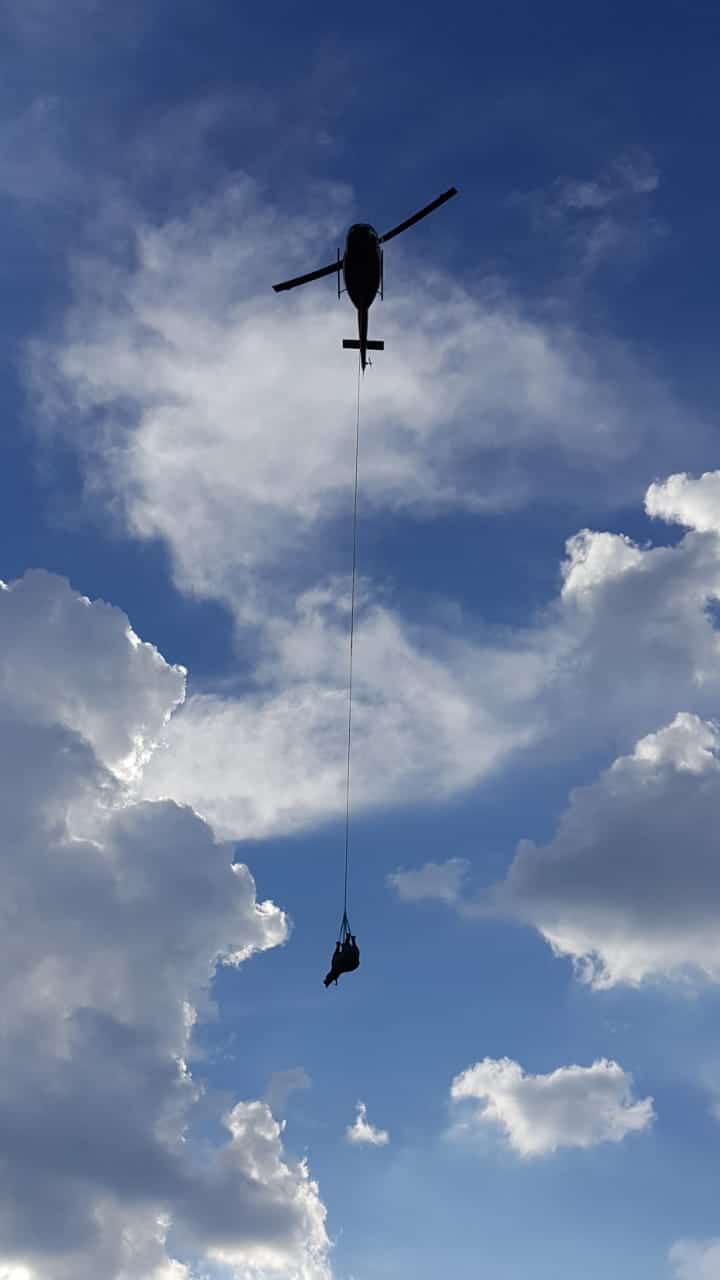Airlifting rhinos is becoming more popular in conservation. To reduce incidents of rhino poaching, conservationists have taken to translocating rhinos to safer areas. This often means airlifting them by helicopter, and often upside down. While it may seem strange, even cruel, to transport these huge animals in such a precarious fashion, there is increasing evidence that this method of translocation is the best option.
It is especially common to translocate black rhinos in this way to protect them from poachers in Namibia, which is home to one third of Africa’s remaining black rhinos. In order to safely move them, the rhinos much first be sedated and then carefully fitted with a harness so they can be securely lifted by helicopter. This is the easiest way for field conservationists to move the massive rhinos across Africa’s rugged terrain.
But it wasn’t until recently that researchers discovered that this upside down method also happens to be the safest for the rhino’s health. At the behest of the Namibian government, veterinary researchers determined that the rhinos have higher blood oxygen levels while hanging upside down. This is significant because the strong sedative used on rhinos for translocation often lowers their oxygen levels, so being upside down helps counter this effect. Airlifting them by their feet is also much faster than the involved process of positioning them securely on a stretcher to be lifted on their side.
So while hanging upside down from a helicopter cable might seem uncomfortable, it’s actually the best way to transport rhinos to remote, safe areas where poachers will have a harder time reaching them. As conservationists continue to employ this method, they will continue to establish safe practices to help black rhinos reach their new homes without issue.
To read the full article about rhino translocation, click here.


